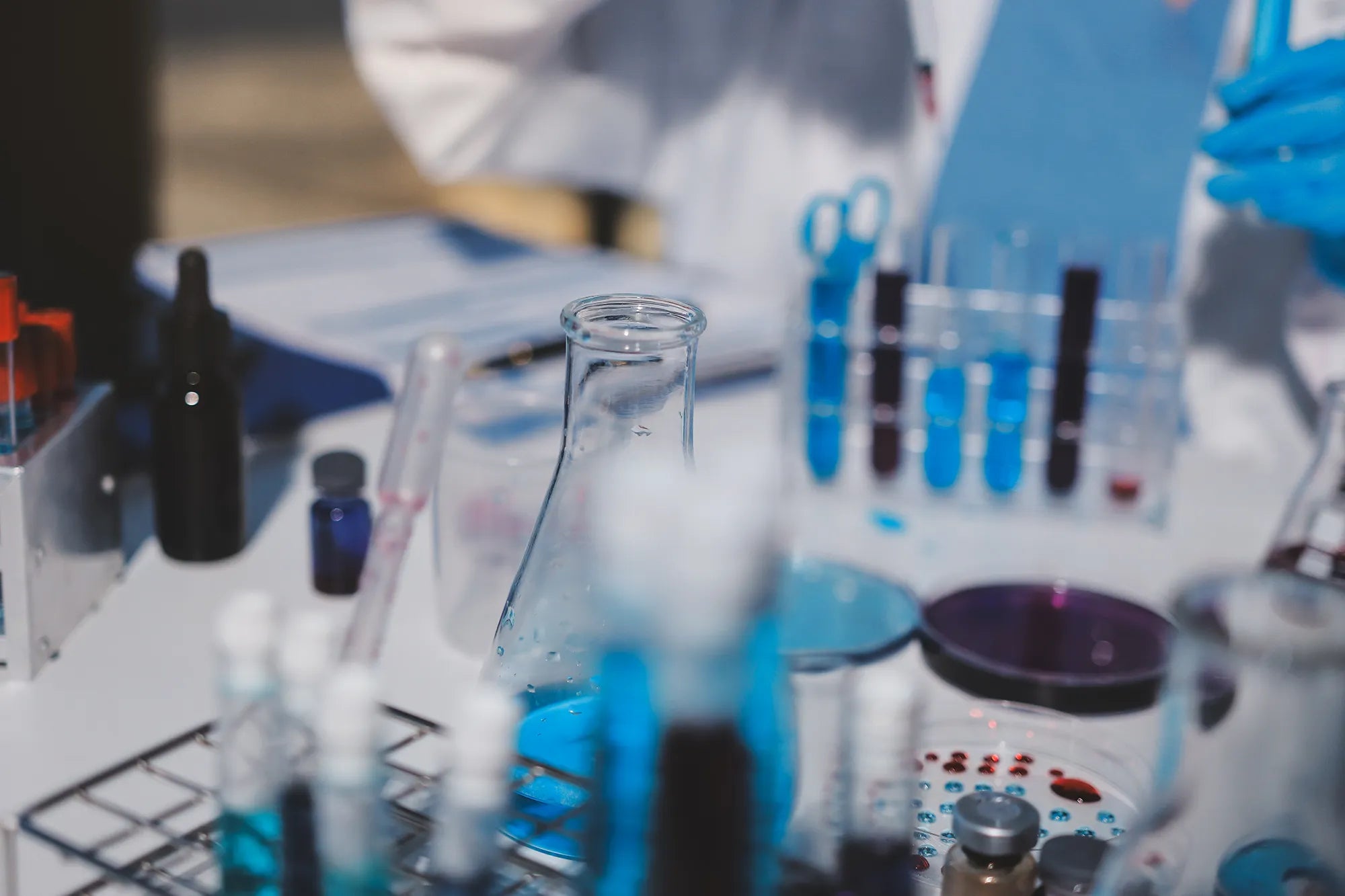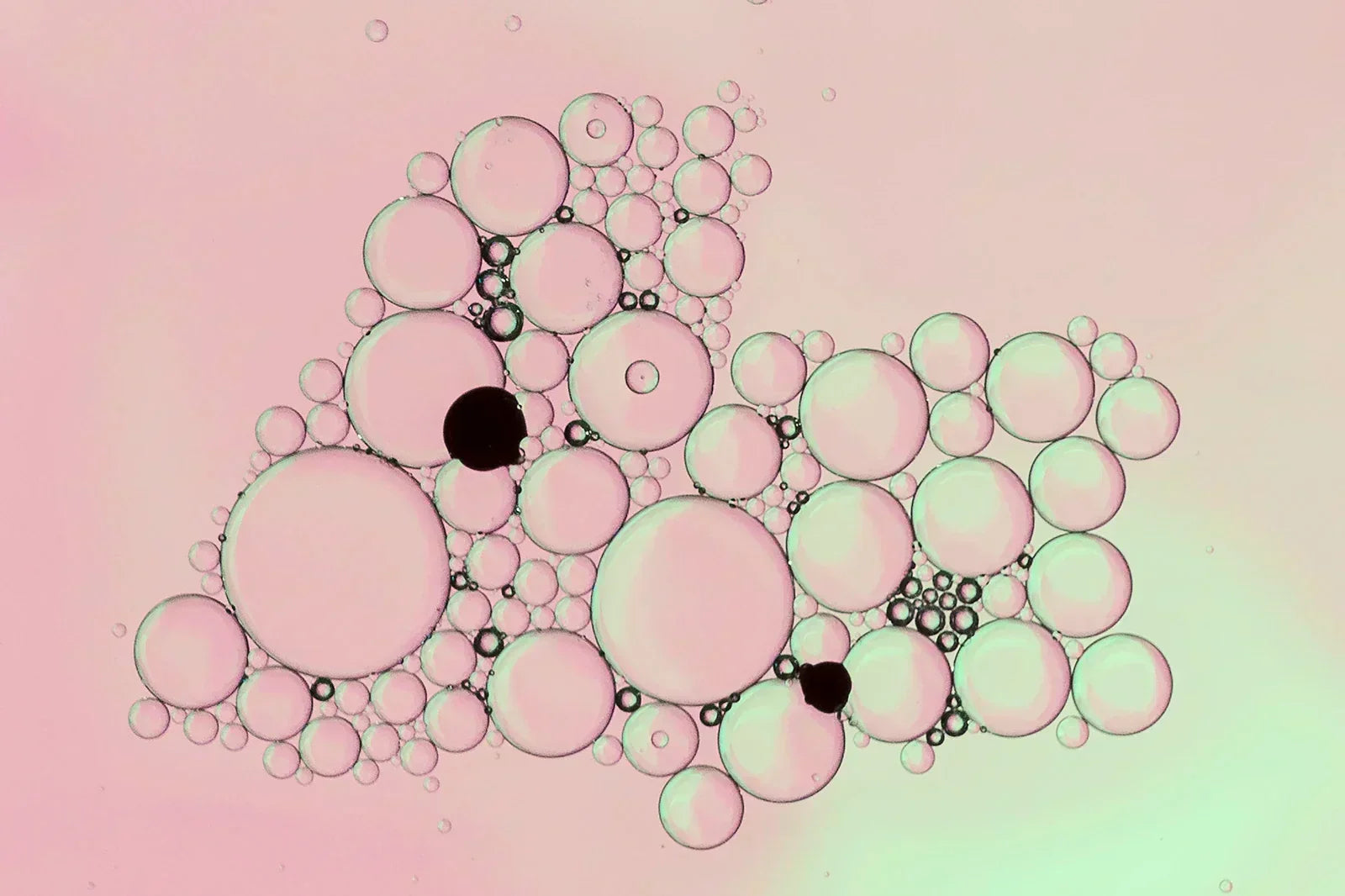How to read an HPLC chromatogram (peptides) — a quick QC guide
This plain-English QC guide explains what a peptide HPLC trace shows, how purity (area%) is calculated, why results are method-dependent, and the common artifacts to watch for. It also outlines exactly what Tide Labs publishes on batch pages inside the QC Hub.
Key takeaways
- Chromatogram basics: x-axis = retention time; y-axis = detector signal (e.g., UV at 214–220 nm).
- Purity (area%) = main peak area ÷ total peptidic area under that method. It’s an impurity profile, not identity.
- Method matters: column, gradient, wavelength, flow, temperature and injection solvent all move peaks.
- NPC ≠ purity: Net Peptide Content accounts for water/counter-ions; purity does not.
Anatomy of a chromatogram
- Retention time (Rt): when a component elutes. Useful for comparing runs on the same method.
- Peaks: features formed as components elute; the area under each peak is proportional to amount detected.
- Baseline: the “zero” line. A stable, flat baseline helps separate real peaks from noise.
Purity (area%) vs Identity vs NPC
Purity answers “what fraction of UV-absorbing peptidic material is the target peak on this method?” Identity requires orthogonal evidence (e.g., MS/sequence). NPC estimates how much of the powder’s mass is peptidic (subtracting water, counter-ions, residual solvent, excipients).
Purity is about the peaks. NPC is about the powder.
What changes a trace (why labs include method notes)
- Column chemistry & dimensions (e.g., C18, particle size, length/ID).
- Gradient (solvent A/B ramp, % organic, run time) and flow rate.
- Detection wavelength (peptides commonly 214–220 nm) and temperature.
- Injection solvent & concentration (can cause broadening or fronting if too strong).
Common artifacts & how to interpret them
- Tailing/fronting: asymmetry from column overload, strong solvents, or interactions.
- Shoulders/co-elution: partially resolved species; may affect purity if shoulders overlap the main peak.
- Baseline drift: temperature/gradient effects or late-eluting background; check method blanks.
- Noise spikes: electrical or injection transients; true peaks repeat across injections.
Reading checklist (practical)
- Confirm method basics (column, gradient length, wavelength, flow, temp).
- Locate the main peak and note retention time.
- Scan for shoulders or nearby co-eluting peaks.
- Check purity (area%) and whether total area excludes non-peptidic background where applicable.
- Cross-reference any reported NPC (%) and how it was measured (e.g., elemental N + moisture).
- Download the chromatogram PDF/image for your records.
What Tide Labs publishes on batch pages
- Batch ID and dates (manufactured/imported/last updated).
- Method notes: wavelength, column family, gradient length.
- HPLC purity (area%) with chromatogram image/PDF.
- NPC (%) where available and how measured (e.g., elemental N + moisture).
- Download links: supplier CoA and, when available, UK HPLC report.
Further reading
- QC Hub — all published chromatograms & batch documents.
- Knowledge Hub — more guides & study roundups.
Updated: 02 Oct 2025



